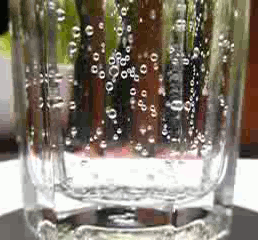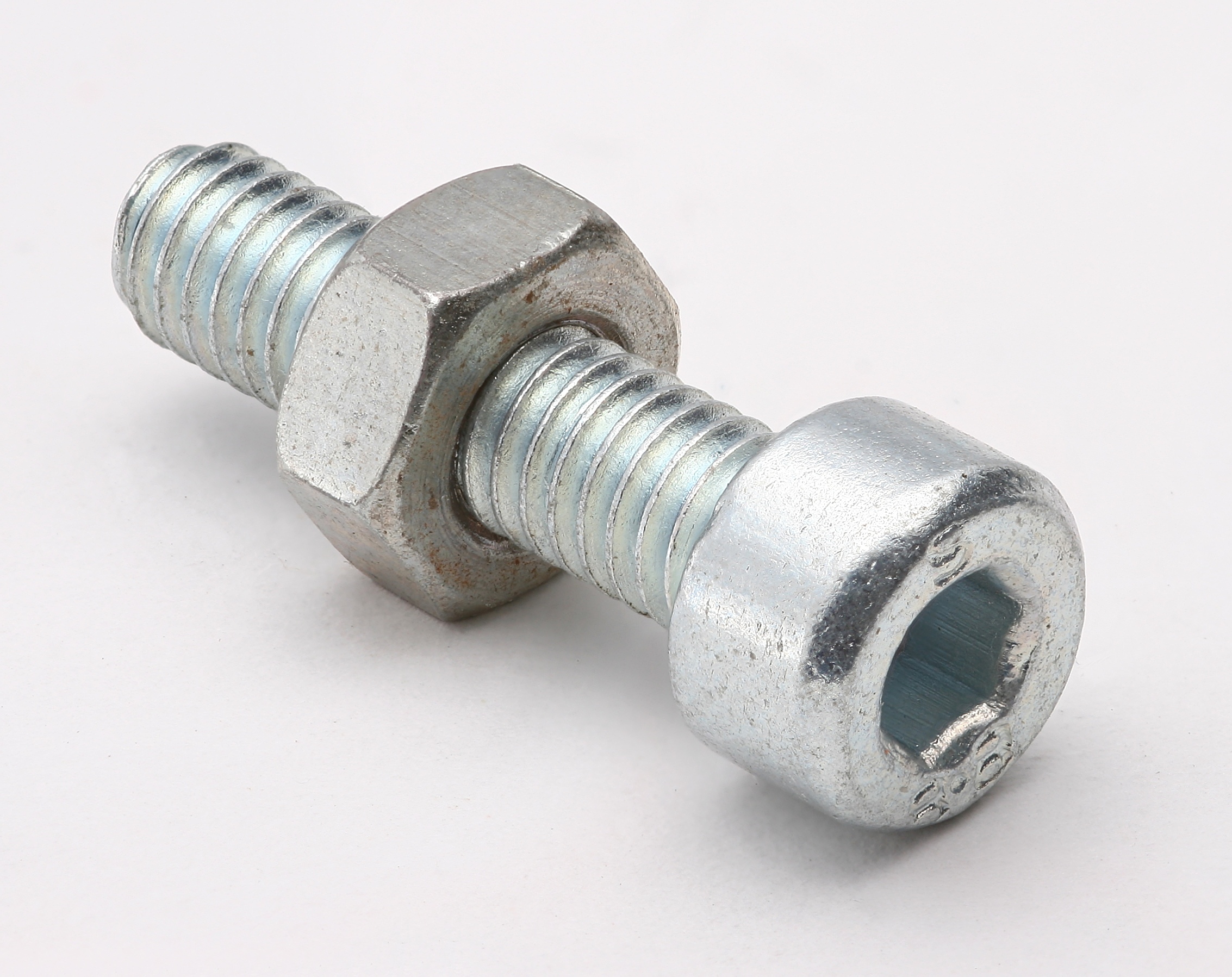|
Wingnut (hardware)
A wingnut, wing nut or butterfly nut is a type of nut with two large metal "wings", one on each side, so it can be easily tightened and loosened by hand without tools. A similar fastener with a male thread is known as a wing screw or a wing bolt. Types ASME B18.6.9 classifies wing nuts first by manufacturing method and then by style. * Type A are cold forged or cold formed produced in regular, light and heavy dimensional series. * Type B are hot forged solid nuts available in three different wing styles. * Type C are die cast nuts available in three wing styles with variances between regular and heavy dimensional series * Type D are stamped sheet metal nuts available in three wing styles. Usage Bicycles Before the development of quick release skewers, bicycle wheels were held in place with wingnuts. Drum hardware In a drum kit wingnuts and wingbolts are used extensively. * For securing a suspended cymbal on the mounting bolt of a cymbal stand. * For securing an adjustm ... [...More Info...] [...Related Items...] OR: [Wikipedia] [Google] [Baidu] |
Drum Kit
A drum kit or drum set (also known as a trap set, or simply drums in popular music and jazz contexts) is a collection of drums, cymbals, and sometimes other Percussion instrument, auxiliary percussion instruments set up to be played by one person. The drummer typically holds a pair of matching Drum stick, drumsticks or special wire or nylon brushes; and uses their feet to operate hi-hat and bass drum pedals. A standard kit usually consists of: * A snare drum, mounted on a snare drum stand, stand * A bass drum, played with a percussion mallet, beater moved by one or more foot-operated pedals * One or more Tom drum, tom-toms, including Rack tom, rack toms or floor tom, floor toms * One or more Cymbal, cymbals, including a ride cymbal and crash cymbal * Hi-hat cymbals, a pair of cymbals that can be played with a foot-operated pedal The drum kit is a part of the standard rhythm section and is used in many types of popular and traditional music styles, ranging from rock music ... [...More Info...] [...Related Items...] OR: [Wikipedia] [Google] [Baidu] |
Mechanical Joint
A mechanical joint is a section of a machine which is used to connect one or more mechanical parts to another. Mechanical joints may be temporary or permanent; most types are designed to be disassembled. Most mechanical joints are designed to allow relative movement of these mechanical parts of the machine in one degree of freedom, and restrict movement in one or more others. Pin A pin joint, also called a revolute joint, is a one- degree-of-freedom kinematic pair. It constrains the motion of two bodies to pure rotation along a common axis. The joint doesn't allow translation, or sliding linear motion. This is usually done through a rotary bearing. It enforces a cylindrical contact area, which makes it a lower kinematic pair, also called a full joint. Prismatic A prismatic joint provides a linear sliding movement between two bodies, and is often called a slider, as in the slider-crank linkage. A prismatic pair is also called as sliding pair. A prismatic joint can be formed w ... [...More Info...] [...Related Items...] OR: [Wikipedia] [Google] [Baidu] |
Seltzer Bottle
Carbonated water is water containing dissolved carbon dioxide gas, either artificially injected under pressure, or occurring due to natural geological processes. Carbonation causes small bubbles to form, giving the water an effervescent quality. Common forms include sparkling natural mineral water, club soda, and commercially produced sparkling water. Club soda, sparkling mineral water, and some other sparkling waters contain added or dissolved minerals such as potassium bicarbonate, sodium bicarbonate, sodium citrate, or potassium sulfate. These occur naturally in some mineral waters but are also commonly added artificially to manufactured waters to mimic a natural flavor profile and offset the acidity of introducing carbon dioxide gas giving one a fizzy sensation. Various carbonated waters are sold in bottles and cans, with some also produced on demand by commercial carbonation systems in bars and restaurants, or made at home using a carbon dioxide cartridge. It is thought t ... [...More Info...] [...Related Items...] OR: [Wikipedia] [Google] [Baidu] |
Drum Key
Drum tuning is the process of adjusting the frequency or pitch of a drum. Although most drums are unpitched instruments, they still have a fundamental pitch and overtones. Drums require tuning for a variety of reasons: to sound good together as a kit, to sound pleasing as an individual drum, to achieve the desired amount of ringing and resonance, and to produce the sound that fits the music. Some drums such as timpani and rototoms are tuned to a definite pitch. Drums are tuned by tightening or loosening the tension rods or ropes, which control the tension on the drumhead. Additional techniques such as muffling may also be used to affect resonance. Styles Snare Drum and Bass Drum Snare Drum * The thin, sensitive bottom (resonant) head is generally tuned higher than the batter head, to deaden the tendency for lengthy, ringing resonance. * The resonant head on a 14-inch snare drum is tuned to a range of 330–391 Hz ( E4 to G4), depending on the overall tuning of the drum ... [...More Info...] [...Related Items...] OR: [Wikipedia] [Google] [Baidu] |
Drum Hardware
Drum hardware is the set of parts of a drum or drum kit that are used to tension, position, and otherwise support the instruments themselves. Occasionally, the hardware is used percussively as well, the most common example being a rim shot. John Morrison plays drum solos entirely on a hi-hat stand (and occasionally also on other parts of the kit hardware, adjacent furniture, and audience). __TOC__ Drum parts Rim A drum "hoop" or "rim" may be made of metal, wood, or other materials and is used to hold a drumhead against a drum shell, either with bolts through metal "claws" attached directly to a hoop, or bolts through holes in a flanged or die-cast rim. The bolts, called ''tension rods'', are screwed into threaded "lugs" attached to the drum shell, in order to tighten and tune the drumhead. A drum key is a type of wrench often used to screw the tension rods into the lugs. Spurs/bass drum legs, casings/lugs, and tension rods/tuning screws There are a number of components tha ... [...More Info...] [...Related Items...] OR: [Wikipedia] [Google] [Baidu] |
Cymbal Stand
A cymbal stand is a stand designed primarily to support a suspended cymbal in a drum kit or percussion section. There are many forms, including: * Straight stands. * Simple boom stands. * Counterweighted boom stands. * Zero-offset boom stands. * Multiple boom stands. The Hi-hat (instrument), hi-hat stand is a stand for supporting and operating a pair of clash cymbals; The term ''cymbal stand'' in English does not normally include this specialised stand. As well as cymbals, cymbal stands are used to support many other small percussion instruments, and accessories such as practice pads. History Although very ancient examples of single cymbals have been found, all ancient references to cymbals and related instruments have them played in pairs similar to modern clash cymbals. The first modern use of a single cymbal was the orchestral use of a suspended cymbal, using one of a pair suspended by its strap. As suspended cymbals became more common, stands were devised to support them fro ... [...More Info...] [...Related Items...] OR: [Wikipedia] [Google] [Baidu] |
Suspended Cymbal
Classical suspended cymbal A suspended cymbal is any single cymbal played with a stick or beater rather than struck against another cymbal. Common abbreviations used are "sus. cym.," or "sus. cymb." (with or without the period). Most drum kits contain at least two suspended cymbals: a crash cymbal and a ride cymbal. History The term comes from the modern orchestra, in which the term ''cymbals'' normally refers to a pair of clash cymbals. The first suspended cymbals used in the modern orchestra were one of a pair of orchestral cymbals, supported by hanging it bell upwards (''i.e.'', with concavity opening downward) by its strap. They could be used as a replacement for a gong.Riemann, Hugo. Dictionary of Music'. Trans. J.A. Shedlock. Augener, 1900. 288. This technique is still used, at times, but has largely been replaced by specialised cymbals with larger mounting holes that can be mounted on a cymbal stand. Occasionally the term ''suspended cymbal'' is still used in the o ... [...More Info...] [...Related Items...] OR: [Wikipedia] [Google] [Baidu] |
Tom-tom 12x8
A tom drum (also known as a tom-tom) is a cylindrical drum with no Rattle (percussion beater), snares, named from the Anglo-Indian and Sinhala language. It was added to the drum kit in the early part of the 20th century. Most toms range in size between in diameter, though floor toms can go as large as . Design history The drum called "Thammattama", played by the Sinhalese people of Sri Lanka, is used in a number of Buddhist rituals in that country. It is commonly heard in Theravada Buddhist temple Vihāras paired along with the reed instrument called horanava. This may be etymologically derived from the Tamil term "Thappattam" or "Thappu", a frame drum associated with South Indian Tamil culture. However, the tom-tom drums on the Western drum set clearly resemble the Sri Lankan version more than the frame drum. The British colonists complained loudly about the noise generated by the "tom-toms" of the natives throughout South Asia. It is likely that the term tom-toms thus comes ... [...More Info...] [...Related Items...] OR: [Wikipedia] [Google] [Baidu] |
Nut (hardware)
A nut is a type of fastener with a screw thread, threaded hole. Nuts are almost always used in conjunction with a mating bolt (fastener), bolt to fasten multiple parts together. The two partners are kept together by a combination of their threads' friction with slight deformation (engineering)#Elastic deformation, elastic deformation, a slight Tension (physics), stretching of the bolt, and compression (physics), compression of the parts to be held together. In applications where vibration or rotation may work a nut loose, various locking mechanisms may be employed: lock washers, jam nuts, eccentric double nuts, specialist adhesive thread-locking fluid such as Loctite, safety pins (split pins) or lockwire in conjunction with castellated nuts, nylon inserts (nyloc nut), or slightly oval-shaped threads. Square nuts, as well as bolt heads, were the first shape made and used to be the most common largely because they were much easier to manufacture, especially by hand. While rare toda ... [...More Info...] [...Related Items...] OR: [Wikipedia] [Google] [Baidu] |
Bicycle Wheel
A bicycle wheel is a wheel, most commonly a wire wheel, designed for a bicycle. A pair is often called a wheelset, especially in the context of ready built "off the shelf" performance-oriented wheels. Bicycle wheels are typically designed to fit into the bicycle frame, frame and bicycle fork, fork via Dropout (bicycle part), dropouts, and hold bicycle tires. Invention The first wheel to use the tension in wire wheel, metal spokes was invented by George Cayley, Sir George Cayley to achieve lightness in his 1853 glider. Construction The first bicycle wheels followed the traditions of carriage building: a wooden hub, a fixed steel axle (the bearings were located in the fork ends), wooden spokes and a shrink fitted iron tire. A typical modern wheel has a metal hub, wire tension spokes and a metal or carbon fiber rim which holds a pneumatic rubber tire. Hub A hub is the center part of a bicycle wheel. It consists of an axle, bearing (mechanical), bearings and a hub shell. The ... [...More Info...] [...Related Items...] OR: [Wikipedia] [Google] [Baidu] |






